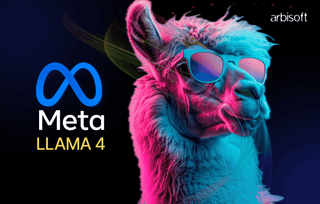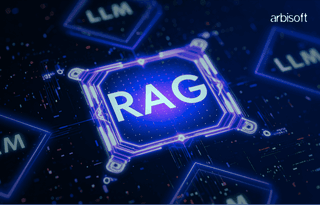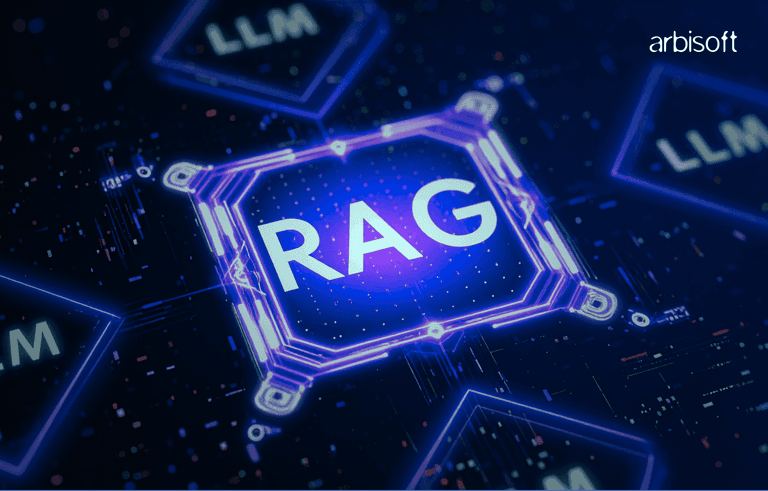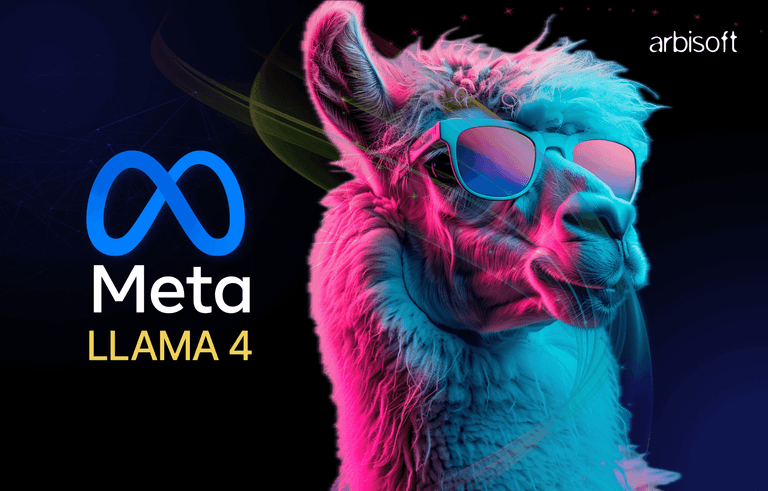We put excellence, value and quality above all - and it shows




A Technology Partnership That Goes Beyond Code

“Arbisoft has been my most trusted technology partner for now over 15 years. Arbisoft has very unique methods of recruiting and training, and the results demonstrate that. They have great teams, great positive attitudes and great communication.”
Small Language Models vs. Large Language Models - A Performance Comparison
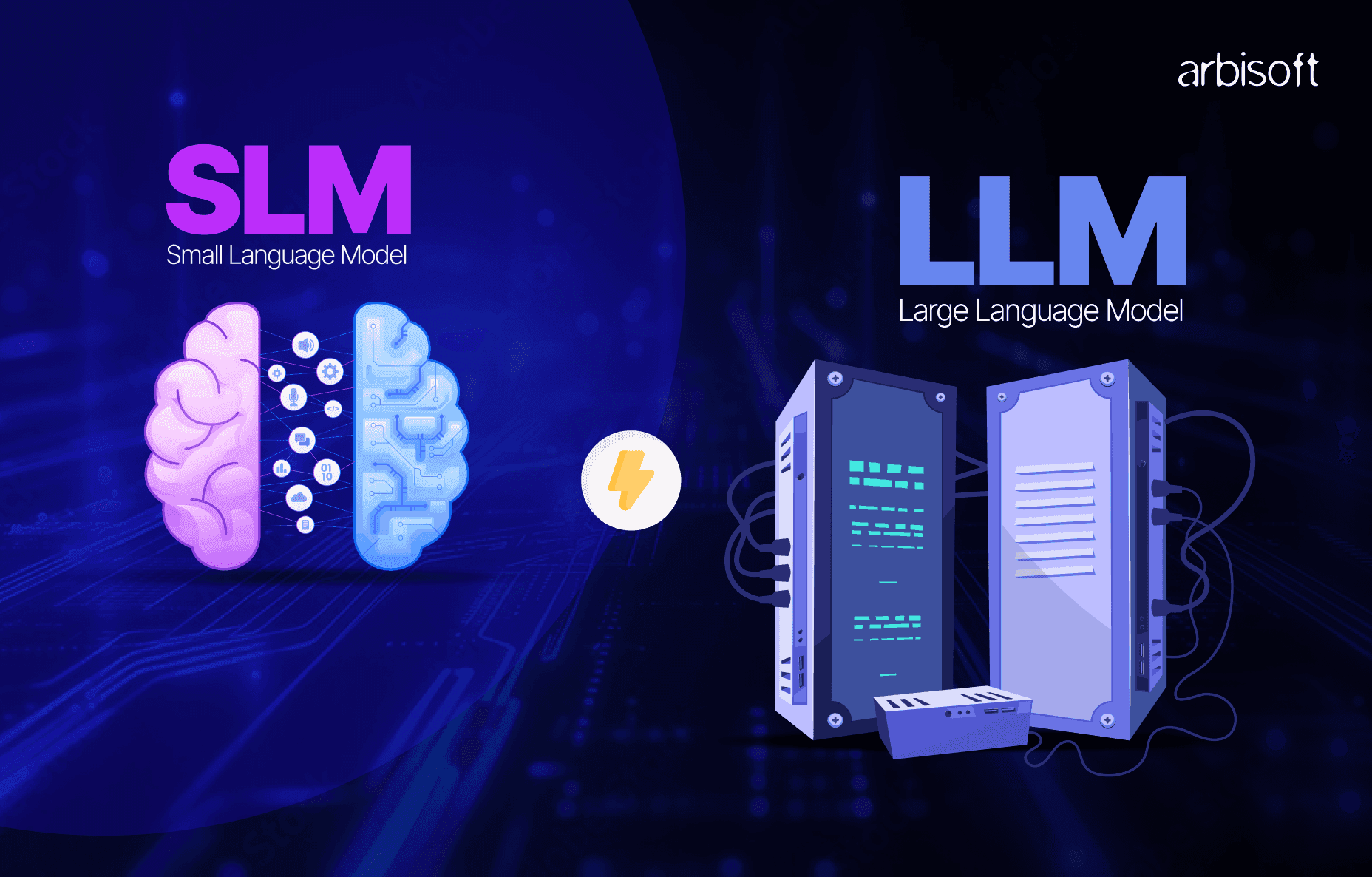
While ChatGPT and Gemini hog the spotlight, small language models (SLMs) are rewriting the rules of AI by slicing through corporate challenges.
Language models—whether small or large—are the engines behind tools like ChatGPT, Claude, and the AI copilots we now use every day. They generate text, answer questions, summarize documents, write code, and even hold full conversations.
The AI world is having a “less is more” moment. Big isn’t always better - that’s the realization hitting us. The one-size-fits-all LLMs are not practical anymore. The smaller models are quietly winning big in real-world use.
There are three main reasons for this shift.
- Costs – Training GPT-4-sized models now burns ~$20M+, while SLMs like Mistral 7B do similar tasks for 1/10th the price.
- Privacy – After high-profile data leaks, 68% of companies now prefer SLMs that run locally—no risky cloud APIs.
- Sustainability – SLMs use 60% less energy, a game-changer as data centers consume 4% of global electricity.
Businesses aren’t just trimming budgets—they’re chasing precision. Take Microsoft’s Phi-4 as an example. An SLM that beats GPT-4 at math puzzles, or Meta’s Llama 3.2, which translates Wolof for rural healthcare in Senegal. Even Google’s Gemini now comes in “Nano” sizes for your phone.
The SLM market is exploding—growing at 20.1% CAGR (2025–2030) to hit 19.2B, while LLMs still dominate at 36.1B by 2030. This shows that both matter, but SLMs are just showing better graphs. So if your AI strategy still starts with “How big is it?”, you’re stuck in 2023. Today’s winners ask - “Does it fit like a glove?
Let’s meet the players. Small and large language models might share the same stage, but they’re built for very different roles. It’s not just about size. It’s about capability, efficiency, and where they fit best.
Don’t waste millions on the wrong-sized model.
Learn what NOT to do—and how to get it right.

Avoid Expensive AI Language Model Mistakes when you choose the right model!

What are Small Language Models (SLMs)?
Small Language Models are compact. They are light, efficient, and surprisingly powerful for their size.
SLMs usually have under 1 billion parameters. That means they’re built to run on lighter hardware, including laptops and even mobile devices. They are built for a specific job, like answering customer questions or analyzing medical reports.
Why are they popular?
- Lower costs – Training an SLM costs about $2 million vs. $50 million+ for LLMs like Gemini.
- Privacy – 68% of companies use SLMs to keep data on their own servers, avoiding cloud risks.
Some of the best examples are:
- Phi-2 by Microsoft – Strong performance in reasoning and summarization tasks.
- Gemma 2B by Google – Open-source and optimized for on-device use.
- TinyLlama, DistilBERT, MobileBERT – Still going strong in edge applications.
- Mistral 7B – Technically larger, but still often grouped with small models due to its smart architecture and low resource needs.
In Hugging Face’s April 2025 leaderboard, Gemma 2B performed within 10% of GPT-3.5 on QA benchmarks—while being 5x cheaper to run.
These models are being used for:
- Chatbots that run offline
- AI tools in healthcare and education with privacy needs
- Cost-effective AI for startups and NGOs
- Personal assistants on devices like smartphones or wearables
Now, let’s look at their larger counterparts—the models that are trying to do it all.
What are Large Language Models (LLMs)?
If SLMs are precision tools, LLMs are the ultimate multitaskers—trained to handle almost any job, but with trade-offs.
LLMs are trained on massive amounts of text to understand, generate, and reason with human language. These models have billions—sometimes even trillions—of parameters, which act like the "neurons" of the model, helping it recognize patterns, context, and meaning.
LLMs don’t just finish your sentence—they can write code, analyze documents, answer complex questions, brainstorm ideas, and even hold full conversations across multiple languages. Language models are also making big moves in creating smart data by offering analytics.
These models usually have 10 billion to 70+ billion parameters. They’re big, expensive, and incredibly powerful.
Some models dominating the scene include:
- GPT-4-turbo by OpenAI – Known for deep reasoning and creativity.
- Claude 3 Opus – Excellent at complex document understanding.
- Gemini 1.5 Pro by Google – Handles long context windows of up to 1 million tokens.
- Llama 3 by Meta – The open-source champion of the LLM world.
LLMs don’t just finish your sentence—they can write code, analyze documents, answer complex questions, brainstorm ideas, and even hold full conversations across multiple languages.
However, all this power comes at a cost.
- They require high-end GPUs or cloud infrastructure.
- They can be slow and expensive to run at scale.
- They consume significant energy, raising sustainability concerns.
The Real Difference
Let’s look at the performance comparison between the two – SLMs vs. LLMs.
Feature | SLMs | LLMs |
| Size | <1B parameters | 10B–70B+ parameters |
| Speed | Fast, <50ms latency (edge deployment) | Slower, 200–500ms (cloud-dependent) |
| Cost to Run | Low (can run locally) ~ 2Mvs.20M+ | High (cloud or multi-GPU needed) 50M–100M+ |
| Accuracy | Great for basic tasks | Best for complex tasks |
| Privacy | Better (can run offline) | Depends on platform/API |
| Context Length | Short (2K–4K tokens) | Long (up to 1M tokens in 2025) |
| Energy Efficiency | 60–70% lower carbon footprint | High energy demand (160% rise in data center power by 2030) |
| Accuracy | 92%+ in domain-specific tasks (e.g., NoBroker’s multilingual customer service) | 85% in general tasks; prone to “hallucinations” (~15% error rate) |
TL;DR
- SLMs are great when you need speed, affordability, and privacy.
- LLMs are best when you need depth, scale, and advanced capabilities.
Performance Metrics to Compare
Let’s get straight to it. When it comes to picking between SLMs and LLMs, four metrics matter most: accuracy, speed, compute needs, and cost. Here's how they stack up.
a. Accuracy & Comprehension
How well can the model understand and respond?
In most benchmark tasks—like question answering, summarization, and logical reasoning—LLMs still lead, but the gap is closing fast.
According to the Stanford HELM 2025 update, GPT-4 outperforms Phi-2 by ~10% on multi-step reasoning tasks. But here’s the surprise - Phi-2 and Gemma 2B now match GPT-3.5 on common QA and summarization benchmarks.
Most SLMs get the job done—especially for single-turn, task-specific prompts.
b. Inference Time
Speed matters—especially in production.
Mistral 7B can generate responses in under 100 milliseconds on a standard RTX 3080. On the other hand, GPT-4-turbo, even with optimizations, typically takes 500ms+ per response on high-end hardware.
On-device models like Gemma 2B now deliver near-instant responses on mobile chipsets (e.g., Qualcomm Hexagon NPU).
c. Compute & Resource Efficiency
Not everyone has access to multi-GPU setups. This is where SLMs shine. Most SLMs today can run locally on CPUs, laptops, or even smartphones.
Platforms like Qualcomm AI Hub and NVIDIA Jetson fully support models like Gemma 2B and Phi-2. Meanwhile, LLMs like GPT-4 and Claude 3 require dedicated cloud infrastructure, multi-GPU clusters, or platforms like AWS SageMaker.
d. Cost
Let’s talk numbers. Training and running these models isn’t cheap—but the difference is huge.
Fine-tuning and deploying a small model like Phi-2 or TinyLlama can be done on Google Colab Pro for $10–20/month. Running GPT-4 API at scale? That can easily cost $100–200+ per month per user, depending on usage.
Companies using LLMs in production often spend thousands per month on compute and API costs.
Emerging Trends
The conversation is no longer just "small vs. large"—new approaches are rewriting the rules. This is what's impacting AI.
1. Hybrid Architectures
Businesses in 2025 are blending SLMs and LLMs with custom AI solutions tailored to specific workflows and objectives.
Why it works — SLMs handle routine tasks (e.g., HR document reviews), while LLMs tackle creative challenges (e.g., product ideation).
Microsoft cut costs by 35% using SLMs for internal emails and LLMs for market analysis.
73% of enterprises now use hybrid models, up from 42% in 2023. - Gartner 2025
2. Edge AI & On-Device Processing
AI is moving closer to users—no cloud required. Models like Cerence’s CaLLM Edge (3.8B parameters) power self-driving features in cars, even offline.
Edge AI devices will hit 12 billion units globally in 2025, up 200% since 2022. - IDC
3. Multimodal SLMs
Small models are learning to see, hear, and speak. Meta’s Llama 3.1 analyzes medical scans and patient voice notes for faster diagnoses. 58% of customer service teams use multimodal SLMs to process text + images (e.g., insurance claims).
Multimodal SLMs cut task completion time by 40% vs. text-only models. - Forrester 2025
4. Regulatory Tailwinds
Governments are easing rules for smaller AI models. SLMs fall under lower-risk tiers in the EU AI Act, avoiding costly audits.
62% of European firms now prioritize SLMs for compliance-sensitive tasks. - EU Commission
Similar rules are also emerging in Japan and Canada, favoring SLMs in healthcare and finance.
Challenges and Limitations of SLMs and LLMs
Both SLMs and LLMs have their weak spots—and knowing these can help you avoid any surprises later. Let's look at some from this table.
| Aspect | SLMs (Small Language Models) | LLMs (Large Language Models) |
| Context Understanding | Limited memory; struggles with long or multi-turn prompts | Handles longer context and multi-turn flows better |
| Reasoning & Accuracy | Weaker on complex tasks; ~15–20% lower accuracy on reasoning | Stronger performance in logic-heavy or multi-step tasks |
| Hallucinations | More prone to generating inaccurate or made-up responses | Lower hallucination rate, especially on factual prompts |
| Multilingual Support | Basic bilingual support; weaker in low-resource languages | Strong multilingual capabilities across 50+ languages |
| Multimodal Capabilities | Mostly text-only; limited or no image/audio support | Full multimodal support (text + vision + audio in top models) |
| Inference Speed | Fast (<100ms on consumer hardware) | Slower (typically 500ms+ per prompt on average hardware) |
| Compute Requirements | Runs on CPU, laptop, or mobile (e.g., Qualcomm AI Hub) | Needs multi-GPU clusters or high-end cloud infrastructure |
| Cost to Use/Deploy | Very low (~$10–20/month on Colab Pro) | High (~$100–200+/month; higher for enterprise-scale deployments) |
| Energy Use | Lightweight, efficient on-device | Energy-heavy; millions of GPU hours for training & serving |
| Data Control & Privacy | Fully local options available; easy to control | API-based; raises data governance and compliance concerns |
The Right Tool for the Right Job
The AI models now are not about size—the game is about precision. Here’s what the data tells us:
- SLMs now train in 3 weeks (down from 6 months in 2023) for tasks like customer service, cutting costs by 60% (McKinsey 2025).
- LLMs contribute 7% to global GDP growth via generative AI in drug discovery, climate modeling, and content creation (World Economic Forum).
- 65% of companies blend both models, using SLMs for daily workflows and LLMs for R&D breakthroughs (Gartner).
Why this balance works:
- SLMs dominate in privacy-sensitive sectors (e.g., healthcare), with 73% of hospitals using them for patient data (WHO).
- LLMs drive large-scale innovation, like reducing drug development timelines by 40% (MIT Tech Review).
- Regulations favor SLMs in the EU and Asia, speeding adoption in finance and education (EU Commission).
Businesses using both models see 30% faster decision-making and 20% higher ROI according to a Forrester 2025 report. The future belongs to those who choose tools strategically—not blindly chase scale.
By 2030, hybrid AI systems could add $12 trillion to the global economy. The question isn’t “small or large?”—it’s “what’s the smartest fit?”








